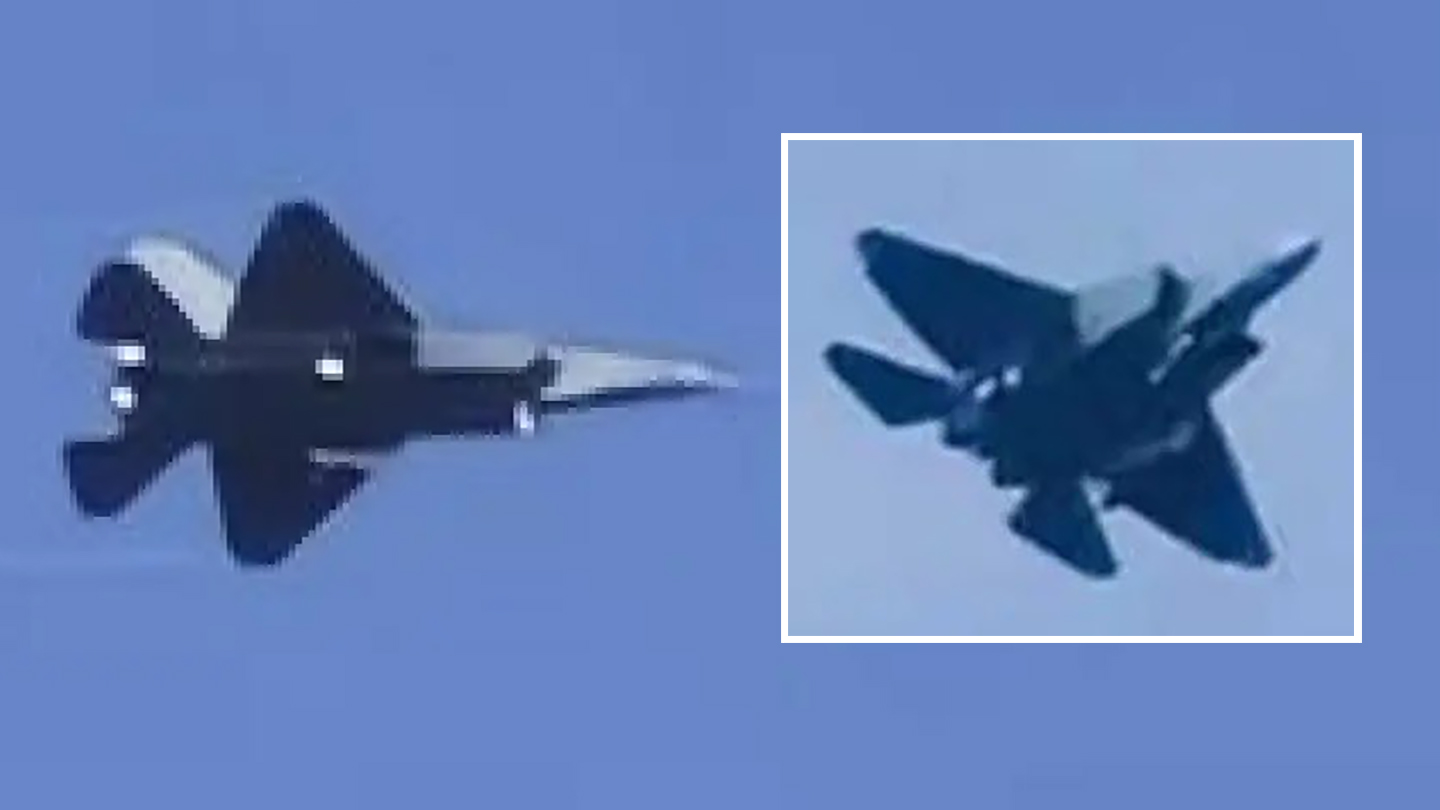The mysterious story behind China’s FC-31/J-35 stealth fighter may have taken another turn, with the appearance of imagery that suggests the existence of a new prototype, perhaps adapted exclusively for land-based use. The last two prototypes of the aircraft that we know about were for the naval J-35 version, expected to eventually serve aboard China’s future catapult-equipped aircraft carriers. Before that, Shenyang did complete two land-based prototypes, known as FC-31s (also referred to as the J-31), apparently primarily for export. However, the new imagery has led to rumors that China may still be pursuing a land-based version of the aircraft, which would likely be aimed at the People’s Liberation Army Air Force (PLAAF) and foreign customers.
The first image of what may be a revised prototype — seemingly a blurred screen grab from a video — was posted to a Chinese aerospace blog in recent days. Initially, some commentators suggested it showed either a new J-35 naval prototype making its maiden flight over Shenyang.
Another photo, slightly less blurred this time, was then posted to the Chinese Weibo microblogging website before being shared more widely.
Since then, other imagery has also appeared, including a better view of the aircraft being closely escorted by a two-seat J-16 Flanker, typical of the kind of chase sortie that would accompany an early test flight, for example.
The rumors that this imagery shows a new or modified version of the aircraft are based primarily on a comparison of its wing with that of the naval J-35. The wing on the jet in the new imagery appears smaller, from some aspects at least, with the suggestion that the horizontal tail surfaces no longer ‘cut in’ to the wing in the same way.
If true, this could indeed indicate a land-based version. In the same way, the U.S. F-35C stealth fighter, designed for carrier operations, features a notably larger wing than the land-based F-35A. Above all, this revised aerodynamic configuration serves to improve handling at low speeds, on approach to the carrier’s flight deck.
This would also not be the first time that such a parallel exists between the Joint Strike Fighter and the FC-31/J-35. After all, The War Zone has previously looked at how some of the changes made to the naval J-35 echo some of the design decisions incorporated in the maritime versions of the F-35. Notably, the J-35 features a totally revised canopy and cockpit arrangement that features no rearward visibility, altogether very similar to that found on the short takeoff and vertical landing (STOVL) F-35B variant. The J-35 also features beefed-up landing gear, although that cannot immediately be determined in these images.
Andreas Rupprecht, the well-regarded Chinese military aviation researcher, author of multiple books on the subject, and contributor to The War Zone, has helpfully put together a collage of photos showing the supposed new J-35 prototype. Overall, it’s hard to come to a definitive conclusion. Certainly, the wing appears smaller from some angles, but, on the other hand, other photos seem to suggest a J-35-style wing after all. As Rupprecht himself admits, there remains the possibility that some of these photos actually show the refined second FC-31 prototype, too, although the status of its test campaign is currently unclear.
We spoke to Rupprecht to get his take on the rumors, central to which is the question of whether the PLAAF even has a requirement for an FC-31/J-35 variant, while it’s busy procuring the J-20 stealth fighter.
“On the one hand, I’m convinced the PLAAF prefers the J-20, and the next generation will shift more to UCAVs guided by types like the J-20S,” Rupprecht said, referring to the anticipated ‘drone-controller’ development of the Chengdu stealth fighter, based on the existence of a two-seat version.
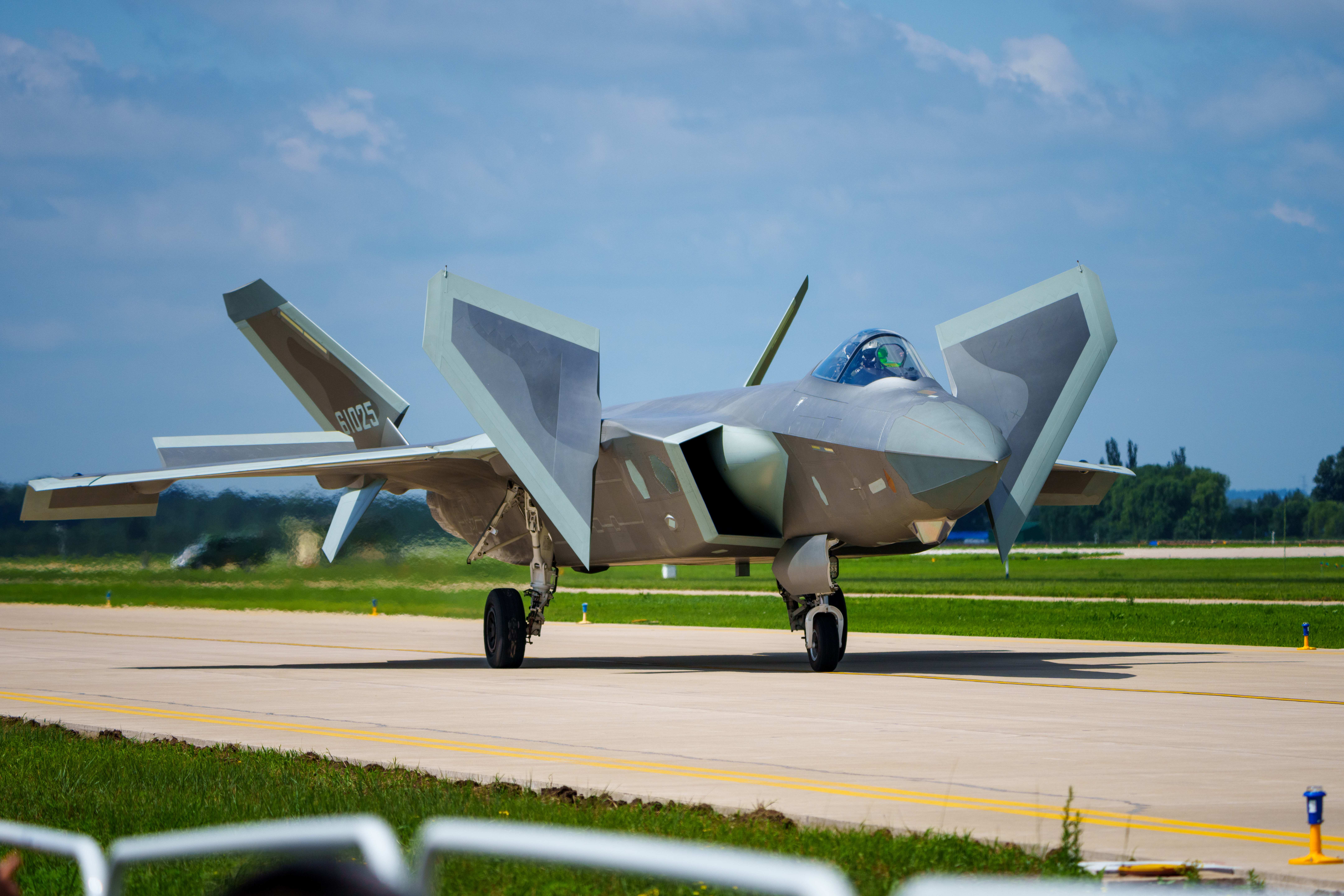
“On the other side, a smaller, lighter, and maybe more affordable type to complement and maybe later to replace earlier J-10s and J-11s would make sense,” Rupprecht continued. While the Chinese-made J-10 is a single-engine multirole fighter, the J-11 is a Chinese variant of the Soviet-era Su-27 Flanker fighter, incorporating successively greater proportions of Chinese subsystems. Both are fourth-generation fighters, early examples of which could soon be earmarked for replacement by stealth jets.
As it stands, we just don’t know for sure what the aircraft spotted over Shenyang is and likely won’t until more and better imagery becomes available.
Perhaps the most likely explanation is that the aircraft we are looking at is simply a third prototype for the naval J-35. That still means that it might incorporate certain changes, including even modifications to the wing platform and empennage.
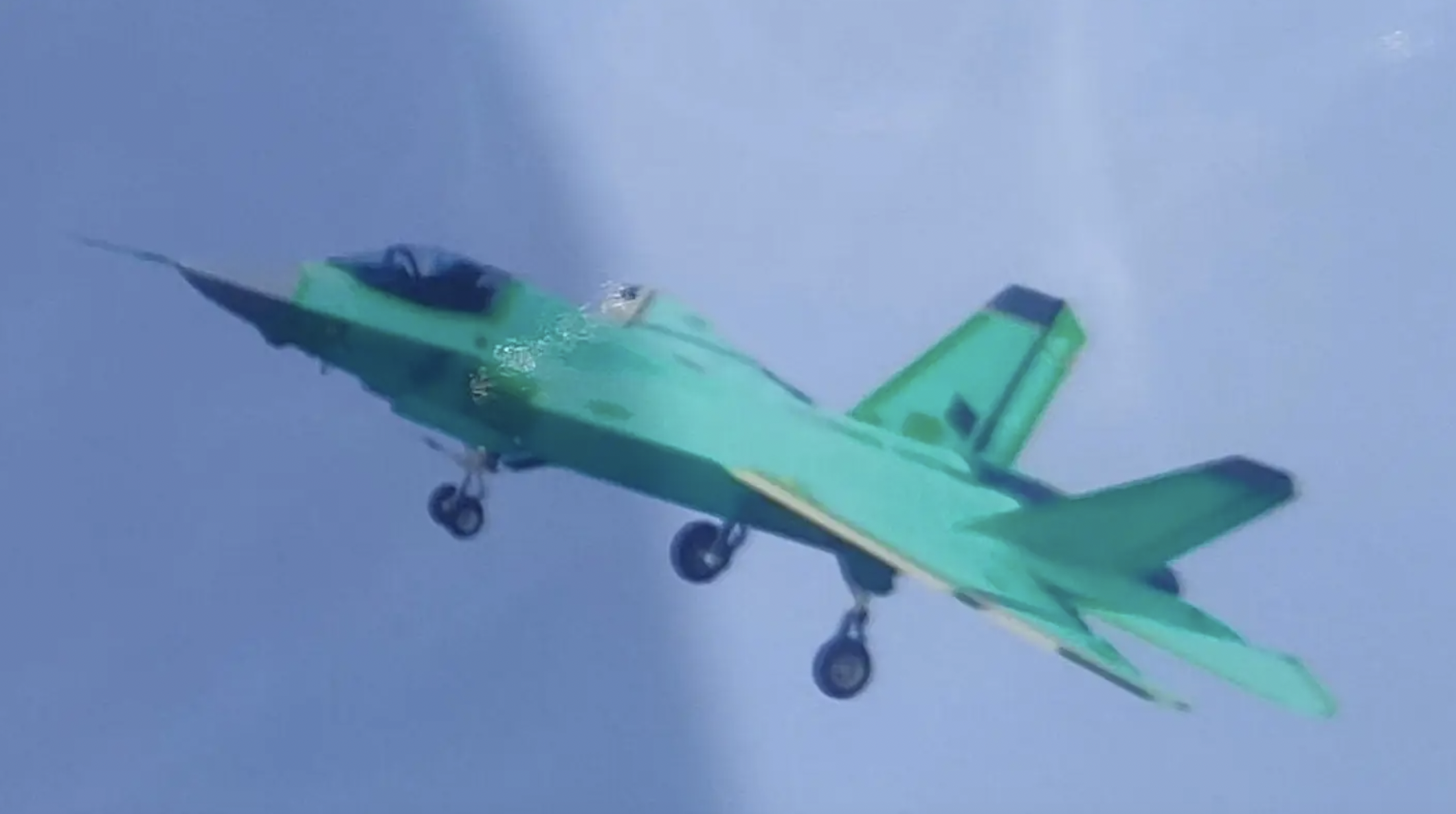
There are other explanations aside from a new land-based prototype, too. Shenyang is very likely still testing the original FC-31 prototypes, which were, of course, also land-based. These two aircraft were already significantly different from one another. The first prototype, serial number 31001, was powered by a pair of notoriously smoky Russian-supplied RD-33 turbofans.
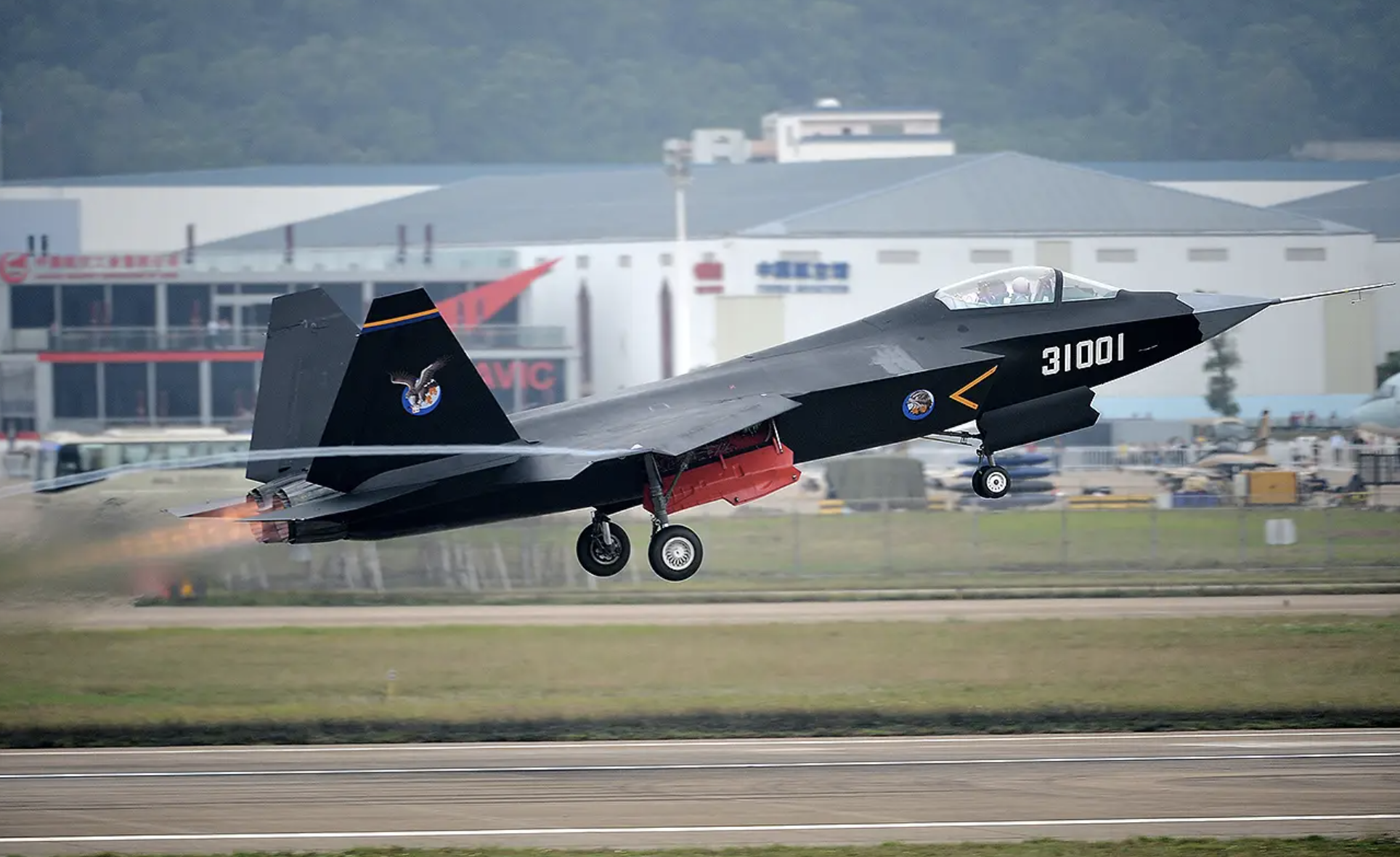
After a second prototype was completed for static tests, the third FC-31, serial number 31003, appeared and incorporated numerous improvements, which you read more about here. As well as using smokeless Chinese-made WS-13E engines, substantial upgrades were made to its low observable shaping and manufacturing quality, and more advanced avionics were also included.
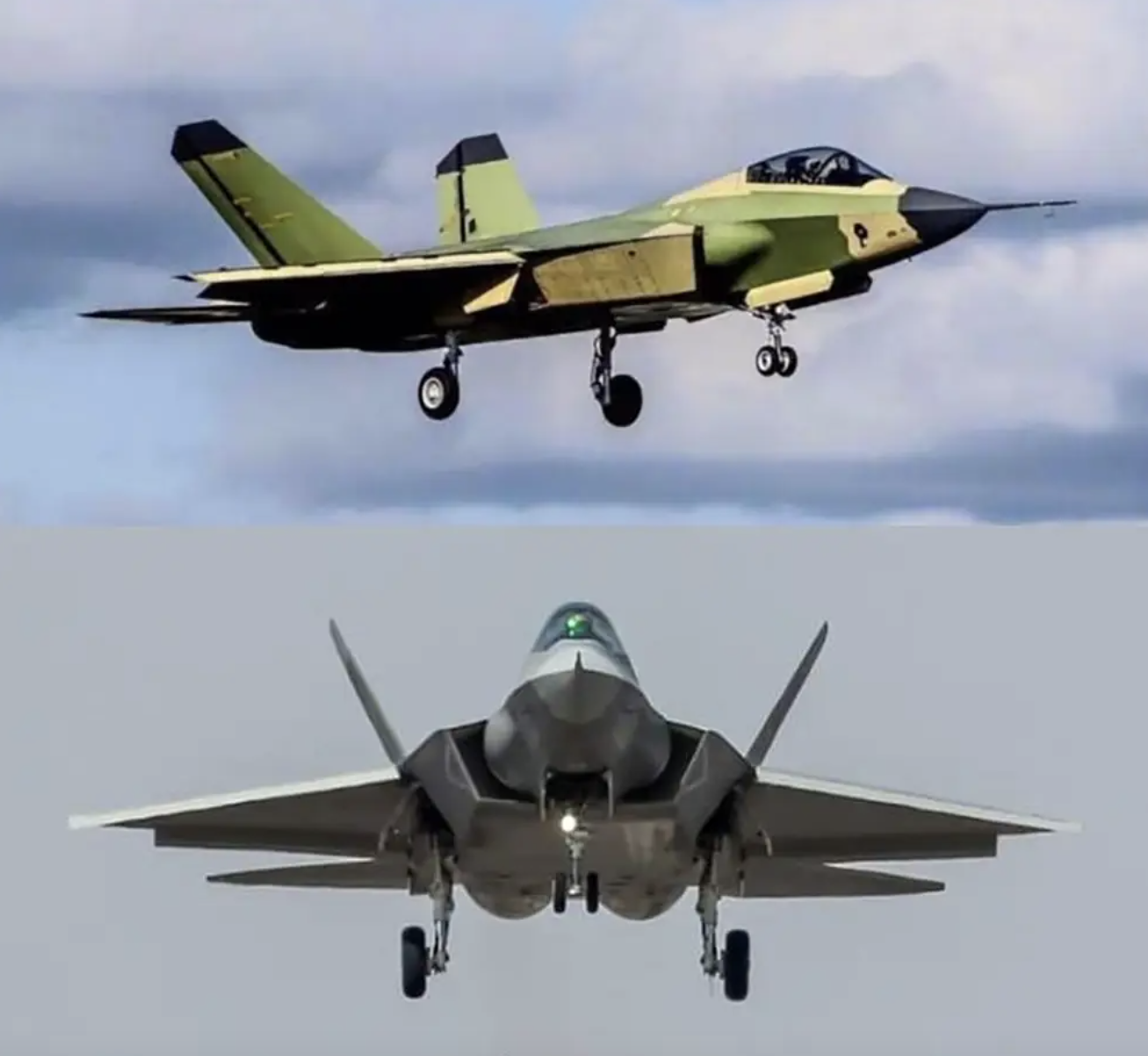
It’s certainly conceivable that Shenyang may have further adapted one or both of the flying FC-31s and is continuing to test them. Those efforts could be intended to garner the PLAAF’s interest, to try and gain foreign orders, or could even be related to testing elements of the naval J-35.
Even if the truth is that land-based versions of the FC-31 have been shelved for the time being, this remains a fascinating program with the potential for more developments to come. For example, there have long been rumors about a possible tandem-two-seat version of the naval J-35 for both training and potential combat missions, including electronic warfare. The apparent removal of the pitot tube from the radome of one of the J-35s also suggests that the aircraft is getting closer to an operational standard. This can also allow for tests associated with what is assumed to be an advanced active electronically scanned array (AESA) radar.
Even if the PLAAF remains lukewarm about the FC-31, there remains a big possibility that it would attract foreign customers, especially as it’s likely to be offered at a substantially lower cost than competing Western designs and without the tight export restrictions that typically come with them. In this sense, the export-optimized FC-31 follows the pattern of the South Korean KF-21 Boramae and the Turkish TF-X, being medium-weight advanced fighters with various efforts to reduce radar signature, while also offering high performance and advanced avionics and other systems. Basically, for those countries who cannot obtain an F-35 or even one of these other aircraft, the FC-31 could provide a modern fighter with some of the competition’s advantages at a lower cost.
Regardless of exactly what kind of FC-31/J-35 version we are seeing in this new imagery — and whether it’s even an entirely new aircraft or not — the capacity of the Chinese military aerospace sector to spring new surprises shouldn’t be discounted. We will continue to look out for any further developments with interest.
Contact the author: thomas@thedrive.com
